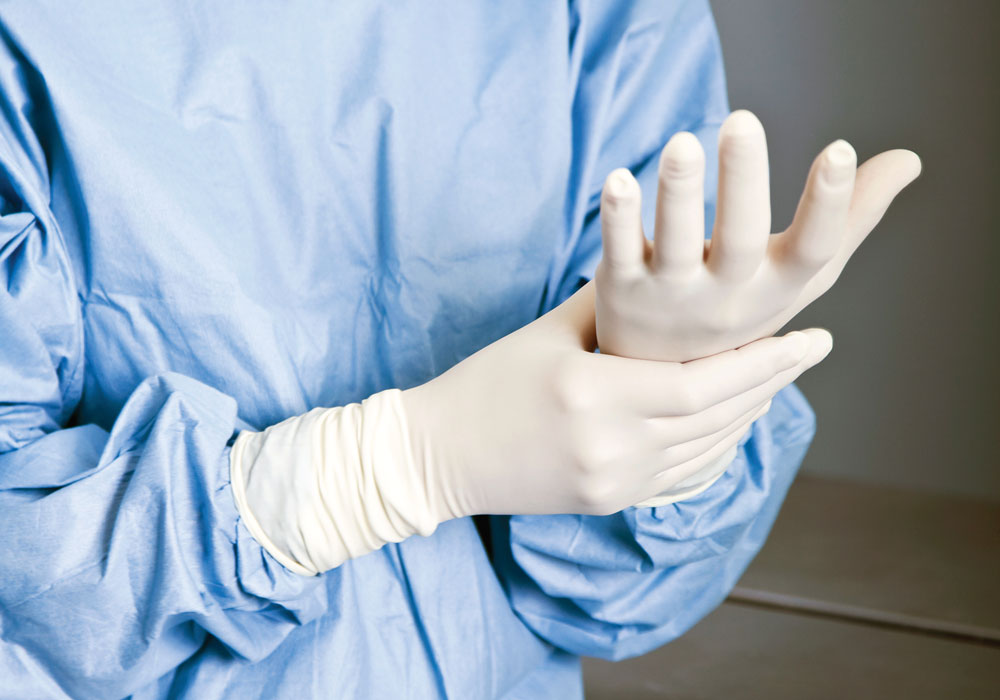One of the highest health policy priorities for the nursing community during the COVID-19 coronavirus pandemic is to ensure the safety of healthcare workers, particularly regarding the availability of personal protective equipment (PPE).
“The COVID-19 outbreak is presenting unprecedented challenges to our healthcare system,” U.S. Surgeon General Jerome Adams, MD, MPH, said. “According to our best projections, combined with information on the ground, the availability of precious medical resources will be limited because of the numbers of patients and the severity of illness.”
The entire health community has been actively engaged with the White House, Coronavirus Task Force, U.S. Congress, and all of the major federal health agencies to secure legislation and policies to increase production of PPE and other important medical equipment, such as respirators.
CARES Act Provisions
From a legislative standpoint, the president signed the $2 trillion Coronavirus Aid, Relief, and Economic Security Act (CARES) Act into law on March 28, 2020. The third of possibly four bills designed to infuse federal support during COVID-19 directly to Americans, it contains many components to boost public health and the economy, including an allocation for spending up to $16 billion to replenish the nation’s depleted stockpile of medical gear, such as ventilators, medicine, and PPE.
PPE Production Increases
Using a wartime provision, the president invoked the Defense Protection Act to compel private-sector industry to accelerate production of masks and ventilators. The Federal Emergency Management Agency established a supply-chain task force to help medical suppliers reach zones most affected by COVID-19. And the U.S. Food and Drug Administration (FDA) streamlined its approval process to ensure that new safety equipment is available sooner and authorized new sterilization techniques that allow for reusing certain PPE.
Save the Supply
The Centers for Disease Control and Prevention (CDC) developed strategies to optimize what remains of the PPE supply. Although the agency acknowledged that “no commonly accepted measurements can distinguish surge capacity from daily patient care capacity,” it offered three strata to conserve face mask supplies:
- Conventional capacity: providing patient care without any change in daily practices
- Contingency capacity: changing daily standard practices without significant impact on patient care or healthcare personnel safety
- Crisis capacity: using strategies that are not commensurate with U.S. standards of care but may need to be considered during periods of known facemask shortages ONS developed interim guidelines for preserving PPE during COVID-19 that use a tiered approach depending on an institution’s supply availability. The guidelines are also available in Spanish.
Rapid-Fire Response
On March 25, FDA issued guidance to expand the availability of face masks and filtering face-piece respirators for healthcare professionals. When FDA-cleared masks or respirators are unavailable, healthcare professionals might improvise PPE, and FDA does not intend to object to that when no alternatives are available.
On March 28, FDA issued an emergency use authorization for the Battelle Critical Care Decontamination System for reuse of compatible N95 respirator masks by healthcare personnel to prevent exposure when supplies are insufficient during the pandemic.
On April 2, the U.S. Departments of Justice and Health and Human Services announced the seizure of hoarded PPE, including approximately 192,000 N95 respirator masks, and their distribution to New York and New Jersey. The FBI’s COVID-19 Hoarding and Price Gouging Task Force discovered the supplies during an enforcement operation on March 30. In addition to the N95 masks, the task force found 598,000 medical grade gloves and 130,000 surgical masks, procedure masks, N100 masks, surgical gowns, disinfectant towels, particulate filters, hand sanitizer, and spray disinfectant.
On April 3 in a public health announcement, CDC issued a recommendation to “wear cloth face covering in public settings where other social distancing measures are difficult to maintain (e.g., grocery stores, pharmacies) especially in areas of significant community-based transmission.” The announcement clarified that cloth coverings are not surgical masks or N95 respirators and those items should be reserved for healthcare workers and other first responders.
So much is changing, and so quickly. Nurses, physicians, and patient advocates are in crisis and doing extraordinary things to help. ONS and other leading health professional organizations are advocating on these measures for their members, their patients, and the general public. Safety first.






